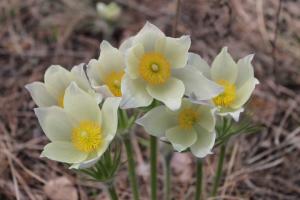Snapdragon is a herbaceous perennial, which belongs to the Podorozhnikov family. The flower is also called antirrhinum. Different peoples have other names: cleft palate, dogs, biting dragon, mouths. It is not difficult to grow these flowers in your own garden. They will delight you for a long time with beautiful flowering in flower beds, rock gardens, ridges, and near borders.
The crop has varieties with inflorescences that are not only two-lipped, but also open-shaped. For example, there are varieties in which the petals do not grow together, forming a visual “lip”.
Description and types
Snapdragon is a crop that comes in both herbaceous and semi-shrub forms. There is also an ampelous type.
Botanical description of the plant:
- 1. The bushes form the shape of pyramids.
- 2. The stems are straight, highly branched, have furrows, and reach a height of 15 cm to 1 m.
- 3. The leaves are arranged alternately, and in the lower part - opposite. They are usually either lanceolate or oblong oval. Painted in all shades of green. The veins on them are red.
- 4. The flowers are large, fragrant, large. They have an irregular shape, two lips. There are both simple and terry ones - it depends on the variety. They gather in spikelets. Flowers can be yellow, white, red, pink. There are not only one-, but also two- and three-color varieties.
- 5. The fruit looks like a seed capsule. There are from 5 to 8 thousand seeds per 1 g.
- 6. Flowering time - from the beginning of summer until the onset of frost.
The plants look good in the garden in flower beds.
Antiriums are classified by height:
Description | Names and photos of varieties |
|
| Gigantic | Reach 0.9-1.3 m. The main shoot, located in the center, is higher than the side shoots | |
Pink and red hybrids |
||
| High | These include varieties with a height of 0.6-0.9 m. They are usually grown for cutting into bouquets or as an accent in group plantings | Canary |
Madame Butterfly |
||
Anna German |
||
|
||
|
||
Goshenka |
||
| Medium height | They are also called semi-high. They are 40-60 cm long. The plants branch greatly. They are considered universal - suitable for bouquets and flower beds |
|
Golden Monarch |
||
Lipstick silver |
||
| short | They are 20-40 cm in height. Such varieties are used as border and flower bed crops. Their main stem is located on the same level with shoots of the second and third order |
|
|
||
|
||
Lemon sherbet |
||
apple blossom |
||
Sun Ray |
||
Peach with cream |
||
| Dwarf | They are 15-20 cm in height. Border mixtures are usually made from such varieties. The plants are also suitable for ridges and rock gardens. They can be grown in pots at home. The peculiarity of these crops is that their main shoot is lower than the side shoots. |
Candy Showers |
Sakura color |

Planting at home
The main way to grow snapdragons is from seeds. If you sow before mid-March, the first buds will appear by the end of spring or in the first days of summer.
It is best to first grow antirrinum at home using the seedling method. You need to sow the seeds like this:
- 1. Select containers. These can be low but wide boxes and containers. They need to have holes at the bottom to allow excess water to escape after watering.
- 2. Pour small stones and expanded clay onto the bottom of the pots. They will serve as drainage. The layer should be 2-3 cm thick.
- 3. Fill the container with substrate and moisten it. Ready-made soil can be purchased at a specialty store. For his self-cooking you need to mix compost soil in half with river sand. Another option: take 2 parts of light turf soil and 1 part of non-acidic peat.
- 4. Mix the seeds with sand, since they are very small - this will make working with them easier. Then sow them on the soil. You can do it differently: lay snow on the ground, and then in it upper layer place the seeds. The snow cover will melt quickly, and planting material will fall to the ground. In the end, all that remains is to sprinkle the seeds with a thin layer of substrate and spray it with water from a spray bottle.
- 5. Cover the container with film or glass. Place it on a windowsill or under a lamp for good lighting. It is required for seed germination.
Every day you need to temporarily remove the shelter for ventilation, spray the soil if necessary and remove condensation from the film or glass. Then the container is covered again. If the temperature in the room where the container with the seeds is located is about 230 C, then the first shoots will appear in 2 weeks. After another 3 days, the film or glass should be removed and the pot with seedlings should be moved to a cooler place.
In the first weeks, the growth of seedlings is very slow. At this time you need to water them a little. The soil must not be over-moistened, otherwise the sprouts will rot due to a disease such as blackleg.
When 4 true leaves appear on the seedlings, they should be plucked, that is, all the plants should be planted in separate small pots (you can also use plastic cups). Up to 3 seedlings are allowed per container. If the pots are on the windowsill, then during the day you can open the window so that the plants begin to get used to the street and harden. But you need to make sure that there is no draft.

When the plants begin to bush, it is necessary to pinch their tops. If side shoots grow upward quickly, it is also recommended to subject them to this procedure. While the seedlings are indoors, it is advisable to feed them using complex mineral fertilizers.

Planting in open ground
Plant snapdragon sprouts in open ground it is necessary in the second half of May or already at the beginning of summer, when it is known for sure that frost will not return. Even if there is a cold snap at night, it will not be dangerous for plants that were previously specially hardened off.
Be sure to choose a well-lit place. Partial shade is also allowed. But the territory must be protected from drafts and strong winds, otherwise the branches with inflorescences will bend to the ground.
Fertile, loose soil is more suitable for snapdragons. You can make a mixture of garden soil, peat, compost and sand. A distance of 40 cm should be left between low-growing crops, plants with an average height - 30 cm, and dwarf varieties - 20 cm.
It is necessary to carefully remove the seedlings along with the earthen lump from the pots (cups), and then place them in prepared holes with pre-moistened soil. Then all that remains is to sprinkle them with soil and water them.
Antirrinum can be used for:
- 1. Decorating the edges of paths in the garden.
- 2. Group plantings on the lawn. Snapdragon goes well with bush petunias, sage, phlox, poppies, annual chrysanthemums, cosmos. Dracaena: types, cultivation and care at home
- 1. Watering. It should be moderate and regular. It is best to water the plants early in the morning. It is recommended to use distilled or filtered water. If the weather is rainy, then there is no need to irrigate the soil. Watering is very important during the period when buds form and open. But water stagnation should not be allowed, as this may cause the plant to rot.
- 2. Weeding and loosening the soil. This is beneficial for the root system - this way it receives more useful components, air and water, and weeds do not interfere with the development of flowers. It is recommended to loosen the soil the next day after watering.
- 3. Tying. If the antirrinums are tall, they should be tied to a fence or stakes so that they do not bend due to wind or rain.
- 4. Trimming. All fading inflorescences must be removed so that they do not interfere with other buds opening. If you need to collect seeds, you need to leave 2-3 boxes at the bottom of the flower for ripening. The rest can be deleted.
- 5. Feeding. There should be 2 of them during the season. The first one is carried out 10 days after transplanting the plants. It is necessary to use nitrophoska. The second feeding is carried out when the buds appear. It is best to use special complex mineral fertilizers that are intended for flowering plants.
- 6. Insulation. In autumn and winter, some varieties need to be insulated. To do this, you can use sawdust, dry leaves, spruce branches or special agrofibre.
Rules of care
Caring for snapdragons is quite simple. For its development it is enough to create the minimum conditions:
Caring for snapdragons also involves prevention various diseases. If you create the right conditions content, then the flower will not get sick, but if the rules are violated, then the risk increases greatly. Snapdragon can suffer from rust, septoria, rot, and fusarium. The diseased plant should be removed, and nearby bushes should be treated with fungicides (Fundazol, Fitosporin, Topaz). To combat insect pests, it is recommended to use insecticidal agents (Aktara, Aktellik).
Antirrinum or Snapdragon(lat. Antirrhinum) belongs to the herbaceous plants of the Plantain family. The genus includes more than 50 species of perennial flowers, differing in flowering time, variety of flower colors and distribution area. Under natural conditions it can be found in warm climates and is also found in North America. Antirrinum means “nose-like” in Greek. It is recommended to grow snapdragon from seeds at personal plots, since with minimal care you can create incredible compositions in landscape design.
Botanical description
The perennial plant snapdragon in our latitudes is grown as an annual, since many species and varieties are not adapted to our harsh winters and freeze out in severe frosts.
Antirrhinum stems are simple and numerous. Depending on the type, they can reach different sizes in height. Low growing varieties barely reach 20 cm in height, and tall ones can be up to 1 meter.

The pyramidal bushes bear pubescent leaves of a lanceolate, elongated shape. Light pubescence is clearly visible on the leaves. Blooms beautiful flowers irregular shape. When fully bloomed, the flowers resemble the gaping mouth of a lion, hence the name of the plant.

Thanks to breeding work, not only natural varieties with simple flowers are known, but also with double ones. White, yellow, pink and bicolor flowers of cultivated snapdragon are collected in racemes. The flowers of wild species are purple, blue and yellow.
Homeland of the plant - North America, cultivated in Russia for many decades. During this time, numerous varieties have been developed that allow you to create a beautiful, bright corner in the garden. The pleasant aroma attracts not only butterflies, but also bees.
Myths about the origin of the flower
An ancient Greek legend says that the snapdragon first appeared in the lands of Hellas, near the Peloponnese. Here Hercules performed his first feat. In those days, the Nemean lion, famous for its invulnerability, was rampant. In an unequal battle, Hercules defeated the Nemean lion.
In honor of the victory over the evil enemy, the goddess Flora presented Hercules with a flower of unearthly beauty, which she called snapdragon. There is still a custom in Greece to give antirrinum to heroes.
Read also: Anemones: 25 species, features of reproduction and care, planting in open ground, forcing in winter, description of the medicinal properties of the plant (50+ Photos & Videos) + Reviews

This beautiful antirrhinum was presented to the brave Hercules in honor of his victory over the raging Nemean lion
It is believed that snapdragon is a medicinal plant. Infusion and decoction prepared from dried parts of the plant help get rid of shortness of breath, furunculosis, liver and kidney colic. The tincture helps to tone up and give confidence in your abilities. That is why the snapdragon at all times symbolizes arrogance.
Types and varieties of antirrinum: classification
Among the variety of species, giant, tall, medium-sized, short and dwarf snapdragon species are distinguished.
Gigantic

Snapdragon Rocket
The plants are tall, often grow in one stem, and have a compressed bush shape. Terry flowers bloom on long stalks, large flowers. They are grown mainly in greenhouse conditions for cutting.
Among the varieties are: Start, Frontier, Supreme, Rocket, Forcing.
Tall

Tall plant
Large and spectacular annual plants with a bush height of 65-110 cm. Dense and compact bushes consist of few stems arranged according to rank. Snapdragons of this species are characterized by dense inflorescences with large flowers. Tall plants look beautiful when cut.
Medium height
By appearance- These are beautifully flowering, pyramidal, compact bushes, characterized by a plant height of 35-50 cm. The stems are highly branched and look very lush.

However, among the huge variety of varieties you can choose from for different periods flowering and with their help create an interesting composition.
short

Low growing varieties
Low bushes of plants barely reach 30 cm in height. There are many shoots on the bushes. When fully dissolved, antirrinums resemble a round ball. The inflorescences are loose, small, characterized by early and medium flowering periods.
Dwarf

Miniature variety of snapdragon
Miniature varieties reach 15 cm in height. The species is characterized by strong branching of bushes. Upon visual inspection, you may get the impression that the stems are spreading somewhere. Small flowers bloom on short peduncles.
Growing from seeds
To speed up the growing process and get earlier flowering, you need to sow seeds for seedlings. To do this, you need to prepare a container for planting, 2 sieves with large and small cells, and a spatula.

Achene of a plant
The selected container or container for growing seedlings should not be less than 10 cm in height. Holes must be made at the bottom of the container for water to drain.
At the bottom of the container you need to pour a drainage layer, which can be made from expanded clay, vermiculite, perlite or small pebbles. Next you should start preparing the soil.
Selecting soil for planting
Good germination seeds are observed in loose, light soil, which can be purchased at a specialty store or prepared yourself. To do this, take 1 part of turf soil and mix it with the same amount of sand and peat. After mixing, add 0.5 parts of humus and 0.3 parts to the soil. wood ash.

Beautiful “slipper” of an annual plant
After mixing again, the prepared mixture must be sifted through a sieve. First you need to sift through a large sieve. The resulting screenings are filled into a container on top of the drainage layer.
Then sifting should be done using a fine sieve. This part fills the remaining space to the top of the container.
Preparation of seed material
The store presents to the buyer's attention various varieties snapdragon. From a wide variety, you can choose exactly the variety that will meet the required characteristics: plant height, flowering time, number of double or single flowers, humidity requirements and growing conditions.
If the seeds were collected in your own garden or flower bed, you need to dry them, put them in a bag and store them on the bottom shelf of the refrigerator. There the seeds will be stored until spring. Thus, the seeds will undergo natural stratification and will be ready for sowing.

Before sowing, seeds must be disinfected. To do this, prepare a light pink solution of potassium permanganate. The seeds must lie in the solution for at least 0.5 hours. After the time has elapsed, you need to remove the seed and dry it on a napkin. Only after all the procedures can you start sowing.
Rules for sowing seeds for seedlings
To evenly distribute the seeds over the surface of the soil, they must be mixed in advance with fine dry sand. In a prepared container with poured soil, small grooves are made at intervals of 2 cm.
It will be more convenient to distribute the seeds over the surface if you place them in a paper envelope with a corner cut off. With this method, sand with seeds is evenly poured out of the bag and carefully placed in the grooves.

After sowing the seeds, they need to be lightly pressed so that they get better contact with the ground. On top of the seed layer you need to pour a layer of sand and fertile soil.
Watering should be done by spraying from a fine spray bottle.
After all the work has been done, the container with the seeds should be covered with film and placed in a well-lit place. Good seed germination is observed at a temperature of +18 °C. From time to time you need to remove the film cover and ventilate the plantings. Moisten only after the top layer of soil has dried.
How to care for seedlings
When the seedlings hatch from the seeds, you can remove the glass or film. You need to remove it gradually, increasing the ventilation time by 10-15 minutes every day.
First, the seedlings develop a root system. The first true leaves develop 3 weeks after the appearance of the first shoots. When 2 pairs of true leaves are well developed on the snapdragon plant, it is recommended to pick the plantings.

Young seedlings ready for picking
Dive into separate peat cups, cassettes or plastic containers. The diameter of the cup should be within 8 cm.
If transplanting into large containers is carried out, a 5x5 cm pattern should be observed between seedlings. After transplanting, you need to water the soil well and place the pots with plants in a dark place.
This pick is called intermediate. It allows you to increase the bushiness of plants. To achieve the appearance of many stems, you need to pinch the top in time.
If the picking was carried out in a common container, then after the plants grow up, it will be necessary to carry out another transplant. The scheme should already be like this: the distance between seedlings should not be less than 10 cm.

Plants need to be provided with enough light and good watering
For successful cultivation For seedlings, a temperature of +23 °C is suitable. Excessive waterlogging of the soil can lead to diseases, such as blackleg, so watering should be done only after the top layer of soil has dried out.
If a coating of unknown origin or any rot is noticeable on the soil surface, urgent treatment will be required. To prepare the solution, you need to take 1 liter of water and dissolve 10 drops of Fitosporin in it. After processing, you can scatter crushed charcoal over the surface of the soil.
Transplanting seedlings into open ground
Transplantation of snapdragon seedlings for permanent residence is carried out only after the threat of return frosts has passed. For different regions times may vary. Approximate time frame: from mid-May to mid-June.

First we prepare the soil
For good growth and development of antirrhinum, loamy soil with high content sand. In such soil, plants are provided with good air permeability. Sandy soils drain water well, which prevents the area from becoming swampy. On such soils, plants grow well and do not suffer from diseases of the root system.
To ensure abundant and long flowering, you need to add the following to the soil:
- 1 cup of wood ash per 1 m2
- 3 kg of rotted manure
- 1 kg of peat per 1 m2
- 1 tbsp. l. complex fertilizer for flowers or nitrophoska per 1 meter of plantings
Before planting seedlings, you need to dig up the soil and loosen it. When choosing a place, you need to pay attention to the amount of lighting. Antirrinum will not grow in a dark place. When shaded, there will be no flowering or it will be very sparse.
Replanting should be done in cloudy weather or late evening.
Planting scheme for various varieties of antirrinum:
- low varieties are planted at a distance of 20x20 cm from each other
- between dwarf plants you need to maintain a distance of 15x15 cm
- tall ones should be planted according to the 40x40 cm pattern
- when planting medium varieties, you need to leave 30 cm between seedlings
When planting seedlings, it is better to use the transshipment method so as not to injure the root system. Before transplanting, it is necessary to thoroughly shed the soil in order to maintain the integrity of the earthen coma. You cannot bury plants deeply - only up to the first (cotyledon) leaves. After planting, you need to tamp down the soil around the plants well.

When planting, it is not advisable to mix different varieties, since there is a high probability of cross-pollination and the next year you can get completely different plants.
This method is used by breeders to develop new varieties. Planting can only be done if it is not important what seeds will be collected or if there is no need to collect them.
Outdoor care
Snapdragon prefers fertile soil, so before planting seedlings in open ground, it is recommended to add peat, sand, and organic fertilizers to the soil. Flowers do not like clay, therefore, by introducing additional substrates, it is necessary to achieve air permeability of the soil.
The planting area must have good moisture permeability, otherwise rotting of the root system cannot be avoided.. It is recommended to add humus, leaf soil, and black soil to sandy loam soil. With such soil, you need to do everything possible to ensure that the soil retains moisture at least for a short time.


Flower pots with antirrinums
In addition, designers use snapdragons to decorate rock gardens, ridges, flower beds, and mixborders. They can be used to green rock gardens. The most acceptable partners are sage, cosmos and sea lobularia.
In our climate, a perennial plant is often grown as an annual. If you still take a chance and try to save the plantings until the new season, you will need to cut off the entire above-ground part, add a layer of mulch and cover with dry leaves or spruce branches.
Snapdragon (lat. Antirrhinum) or antirrhinum is a genus of herbaceous plants of the Plantain family, covering about 50 species of perennials, including climbing ones. The plant is a subshrub or herbaceous plants with straight, branched green finely grooved stems from 15 cm to one meter in height, forming pyramidal bushes.
The upper leaves of the snapdragon are alternate, the lower ones are opposite, their shape is elongated oval or lanceolate, the color is from light green to dark green with red veins. The flowers are fragrant, rather large, irregular, two-lipped, depending on the variety, simple or double, collected in spike-shaped inflorescences, and are colored white, yellow, pink, soft fawn, all shades of red, but there are also two-color and even three-color varieties. The fruit is a two-locular multi-seeded capsule. Flowering of snapdragon usually begins in June and ends with the first frost.
Most often, snapdragon, a perennial plant in nature, is grown in gardening as annual plant, but at good care And favorable conditions cold-resistant snapdragon can successfully overwinter in the garden and bloom more beautifully the next year than before. IN garden design Antirrinum is grown as a border plant, although snapdragon looks great both in a flower bed and planted in groups against a green lawn. Snapdragons are often used to decorate balconies and terraces. Of particular interest to gardeners today are the ampelous forms of snapdragons, which can be grown in suspended structures for decorating terraces and galleries.

Snapdragon growing from seeds
Snapdragon reproduces by generative and vegetative methods. Snapdragon seeds retain the ability to germinate for several years. If you live in a warm climate, you can grow snapdragons from seeds, sowing them directly into the ground, and they will sprout in two and a half to three weeks, without any problems surviving even a slight cold snap at night, which is common in spring, but in areas where it is warm occurs gradually, it is better to use the seedling method of growing snapdragons.
Calendula (marigold) is a flower that stands out among others with its bright color. Low bushes with delicate orange inflorescences can be found on the side of the road, in the meadow, in the front garden next to the house or even in vegetable beds. Calendula is so widespread in our area that it seems like it has always grown here. About interesting decorative varieties calendula, as well as about the use of calendula in cooking and medicine, read our article.
I think many will agree that the wind is well perceived by us only in the romantic aspect: we are sitting in a cozy warm home, and the wind is raging outside the window... In fact, the wind blowing through our areas is a problem and there is nothing good about it. By creating windbreaks with the help of plants, we break the strong wind into several weak currents and significantly weaken it destructive force. How to protect a site from the wind will be discussed in this article.
Modern ferns are those rare plants antiquities, which, despite the passage of time and all kinds of cataclysms, not only survived, but were also largely able to preserve their former appearance. Of course, it is not possible to grow any of the fern representatives indoors, but some species have successfully adapted to life indoors. They look great as single plants or decorate a group of decorative foliage flowers.
Pilaf with pumpkin and meat is Azerbaijani pilaf, which differs in the method of preparation from traditional oriental pilaf. All ingredients for this recipe are prepared separately. Rice is boiled with ghee, saffron and turmeric. The meat is fried separately until golden brown, and pumpkin slices as well. Separately prepare the onions and carrots. Then everything is placed in layers in a cauldron or thick-walled pan, a little water or broth is poured in and simmered over low heat for about half an hour.
Basil is a wonderful universal seasoning for meat, fish, soups and fresh salads- well known to all lovers of Caucasian and Italian cuisine. However, upon closer inspection, basil turns out to be a surprisingly versatile plant. For several seasons now, our family has been happily drinking aromatic basil tea. In a flowerbed with perennials and in flowerpots with annual flowers, bright spice plant a worthy place was also found.
Thuja or juniper - which is better? This question can sometimes be heard in garden centers and markets where these plants are sold. It is, of course, not entirely correct and correct. Well, it’s the same as asking what is better - night or day? Coffee or tea? Woman or man? Surely, everyone will have their own answer and opinion. And yet... What if you approach with an open mind and try to compare juniper and thuja according to certain objective parameters? Let's try.
Brown Cream of Cauliflower Soup with Crispy Smoked Bacon is a delicious, smooth and creamy soup that both adults and children will love. If you are preparing a dish for the whole family, including kids, then do not add a lot of spices, although many modern children are not at all against spicy flavors. Bacon for serving can be prepared in different ways - fry in a frying pan, as in this recipe, or bake in the oven on parchment for about 20 minutes at 180 degrees.
For some, the time of sowing seeds for seedlings is a long-awaited and pleasant chore, for others it is a difficult necessity, while others wonder whether it would be easier to buy ready seedlings at the market or with friends? Be that as it may, even if you gave up growing vegetable crops, for sure, you will still have to sow something. These are flowers and perennials, conifers and much more. A seedling is still a seedling, no matter what you sow.
A lover of moist air and one of the most compact and rare orchids, pafinia is a real star for most orchid growers. Its flowering rarely lasts longer than a week, but it can be an unforgettable sight. You want to look at the unusual striped patterns on the huge flowers of the modest orchid endlessly. In indoor culture, pafinia is rightly ranked among the difficult-to-grow species. It became fashionable only with the spread of interior terrariums.
Pumpkin ginger marmalade is a warming sweet that can be prepared almost all year round. Pumpkin keeps for a long time - sometimes I manage to save a few vegetables until summer, fresh ginger and lemons are always available these days. Lemon can be replaced with lime or orange to get different tastes- variety in sweets is always nice. The finished marmalade is placed in dry jars; it can be stored at room temperature, but it’s always healthier to cook fresh food.
In 2014, the Japanese company Takii seed introduced petunia with a striking petal color - salmon-orange. By association with bright colors southern sunset sky, the unique hybrid is called African Sunset. Needless to say, this petunia instantly won the hearts of gardeners and was in great demand. But in the last two years, the curiosity has suddenly disappeared from store windows. Where did the orange petunia go?
In our family Bell pepper they love it, that’s why we plant it every year. Most of the varieties that I grow have been tested by me for more than one season; I cultivate them constantly. I also try to try something new every year. Pepper is a heat-loving plant and quite whimsical. Varietal and hybrid varieties of tasty and productive sweet peppers, which grow well for me, will be discussed further. I live in middle lane Russia.
Meat cutlets with broccoli in béchamel sauce - great idea for a quick lunch or dinner. Start by preparing the mince and at the same time heat 2 liters of water to a boil to blanch the broccoli. By the time the cutlets are fried, the cabbage will be ready. All that remains is to collect the ingredients in a frying pan, season with sauce and bring to readiness. Broccoli needs to be cooked quickly to retain its vibrant color. green color, which, when cooked for a long time, either fades or the cabbage turns brown.
Home floriculture - not only exciting process, but also a very troublesome hobby. And, as a rule, the more experience a grower has, the healthier his plants look. What should those who have no experience but want to have a home do? houseplants- not elongated, stunted specimens, but beautiful and healthy ones, not causing a feeling of guilt with their fading? For beginners and flower growers who do not have much experience, I will tell you about the main mistakes that are easy to avoid.
Lush cheesecakes in a frying pan with banana-apple confiture - another recipe for everyone’s favorite dish. To prevent cheesecakes from falling off after cooking, remember a few simple rules. Firstly, only fresh and dry cottage cheese, secondly, no baking powder or soda, thirdly, the thickness of the dough - you can sculpt from it, it is not tight, but pliable. A good dough with a small amount of flour can only be obtained from good cottage cheese, and here again see the “firstly” point.
Snapdragon or antirrhinum belongs to herbaceous or subshrub species plants of the Plantainaceae family (formerly belonged to the Norichniaceae family). Flowers snapdragons amaze the imagination with their beauty and variety of colors. Serve as an indispensable decoration balconies , loggias And garden plots. They delight with their blooms all summer and until mid-autumn.
Strongly branched or single-stemmed plants with dense foliage can reach a height of 20-80 cm. Their taproot, branched roots penetrate deeply into the soil. Snapdragon is a perennial. Blooms until late autumn. In warmer regions it is adapted to wintering in open ground. In spring, the plant produces young shoots and blooms until frost.
These flowers can also be grown as annuals. In this case, snapdragon is pulled out of the soil in late autumn, and its seeds are stored until spring sowing. About 50 species of this plant are cultivated.
Types and varieties
The very first in the 19th century were German scientists who began breeding snapdragons or antirrhinum. To date, a huge number of varieties have already been bred, classified mainly by plant height:
- 80 cm - high (cut);
- 40-60 cm - semi-high (universal);
- 25-40 cm - low;
- 15-20 cm - dwarf.
Tall or cut flowers are used mainly to create bouquets that can last in water for up to 10 days. This group includes the following types:
- "Alaska"- has greenish-white flowers
- "Anna German"- with light pink shades of inflorescences
- "Canary"- has bright yellow flowers
- "Rocket Orchid" And "Rocket Lemon"- flowers of lilac and soft lemon shades
- "Arthur"- large cherry flowers
- "Goshenka"- orange
- "Swallowtail"- flowers of two colors: crimson and yellow
The main shoots of semi-tall varieties of antirrinums rise above the shoots of the second order. These types include:
- Golden Monarch
- White Monarch
- Scariet Monarch
- Rubi
- Lipstick Silver
- Tequila Sunrise
Low and dwarf varieties are represented by the following types:
- Floral Showers
- Tip-Top
- Magic Carpet
- Tom Thumb
- Kimozi
- Chimes
- Hobbit and many others
In dwarf varieties, dense and short inflorescences have a flattened shape. Dwarf snapdragons bloom more profusely than shorter varieties.
A species called "Ruby Star" has recently appeared. It has cherry star flowers. The ampelous snapdragon, called "Lampion", was bred for. It is great for hanging baskets.
Reproduction
The plant is propagated by seeds or by cuttings. The second option is used quite rarely, only for breeding some terry forms. Therefore, growing snapdragon from seeds is the most popular, easiest and affordable way.
In warm climates, snapdragon can be sown in open ground in early spring. Seeds are sown in well-moistened soil, sprinkled with a thin layer of soil and covered with film. To ventilate the seedlings, the film must be removed daily for some time. Snapdragon seeds should not be overwatered; excess moisture has a detrimental effect on them.
In more severe climatic conditions, snapdragon seedlings are grown at home or in greenhouses. At home, flower containers are used for this, in which seeds are sown in early spring. They germinate in 3-4 weeks at temperature conditions 22-25°C.
A mixture of peat, garden soil and humus is used for the substrate. All components are taken in equal quantities. The seeds are well shed and covered with film or glass jar. When the first shoots appear, the coating is removed. Snapdragons are planted in the ground in mid-May. For better adaptation, boxes with seedlings should be left outdoors for some time a few days before planting.
Snapdragon. Planting and care
Although this plant is unpretentious, it grows better and develops well in well-lit areas and in fertilized soils. The soil is prepared a week before planting snapdragons in the ground. For this purpose, for each square meter of the area chosen for planting, you must enter:
- 200 grams of wood ash;
- 3 kg of humus or compost;
- one tablespoon of nitrophoska.
The soil with additives is dug up and leveled. It is better to plant snapdragon seedlings on a cloudy day. Young shoots planted in sunny weather do not take root well. The distance between seedlings is 25-30 cm. The soil must be loosened throughout the summer period and weeds removed from it.
Watering and fertilizing
It will take about two weeks for the seedlings to take root. After this, the first feeding of the plant is carried out. organic fertilizer. This can be nitrophoska or another fertilizer that contains the microelement boron.
Snapdragon flowers need constant watering, but excess moisture can destroy the plant. Therefore, it is better to water antirrinum as the soil dries out. And to maintain the required level of moisture, you can mulch the soil with freshly cut grass or humus.


























